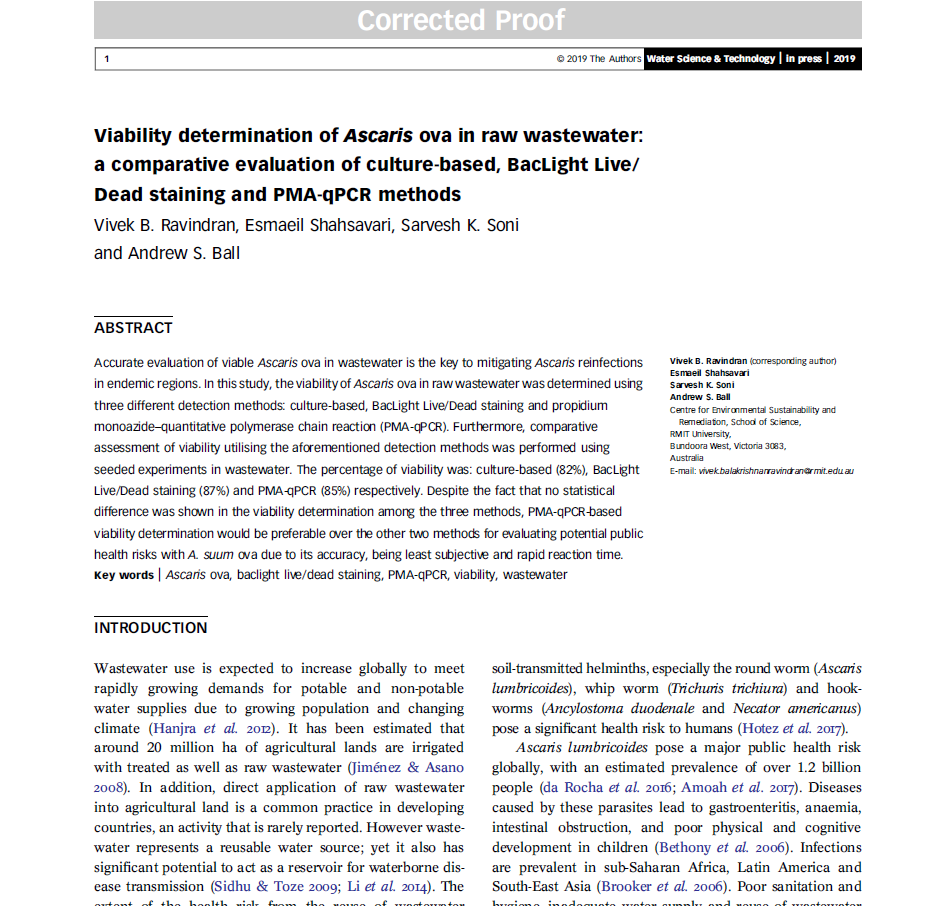
- November 13, 2019
Viability determination of Ascaris ova in raw wastewater: a comparative evaluation of culture-based, BacLight Live/Dead staining and PMA-qPCR methods
Vivek B. Ravindran, Esmaeil Shahsavari, Sarvesh K. Soni and Andrew S. Ball| Centre for Environmental Sustainability and Remediation, School of Science, RMIT University, Bundoora West, Victoria 3080, Australia | 2019 | Water Science & Technology: doi: 10.2166/wst.2019.286
Accurate evaluation of viable Ascaris ova in wastewater is the key to mitigating Ascaris infections in endemic regions as a result of direct applications of raw wastewater into agricultural land. In this study, the viability of Ascaris ova in raw wastewater was determined using a newly validated propidium monoazide–quantitative polymerase chain reaction (PMA-qPCR) method, performed on the Mic qPCR cycler. PMA is a photo-reactive DNA intercalating dye that is able to penetrate the compromised cell wall of non-viable cells and subsequently combines with extracellular DNA or DNA from non-viable cells via exposure to bright visible light. Once combined with PMA, DNA will be incapable of being amplified in the subsequent PCR reaction, whereas only DNA protected by intact membranes of viable cells will normally be detected by qPCR. This new method was compared to two traditional gold standard methods, culture-based and BacLight Live/Dead, to determine if this method is viable for monitoring viable Ascaris ova in wastewater. The percentage of viability found was: culture-based (82%), BacLight Live/Dead staining (87%) and PMA-qPCR (85%) respectively. There is no statistical difference between among the three methods, making the PMA-qPCR-based viability determination perferable over the other two methods for evaluating potential public health risks with A. suum ova due to its accuracy, being least subjective and rapid reaction time.
Read More